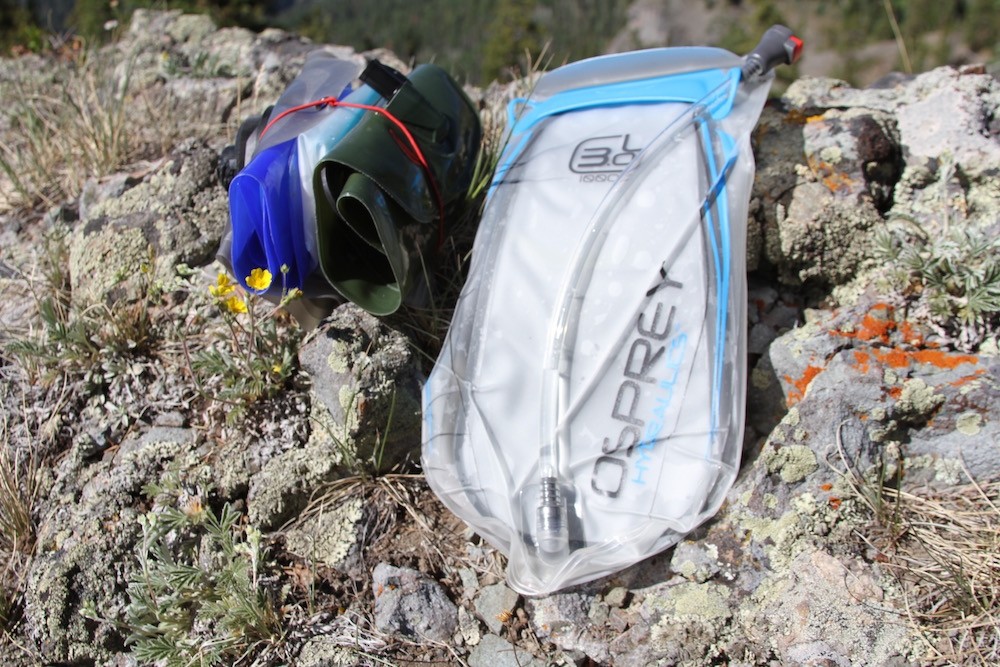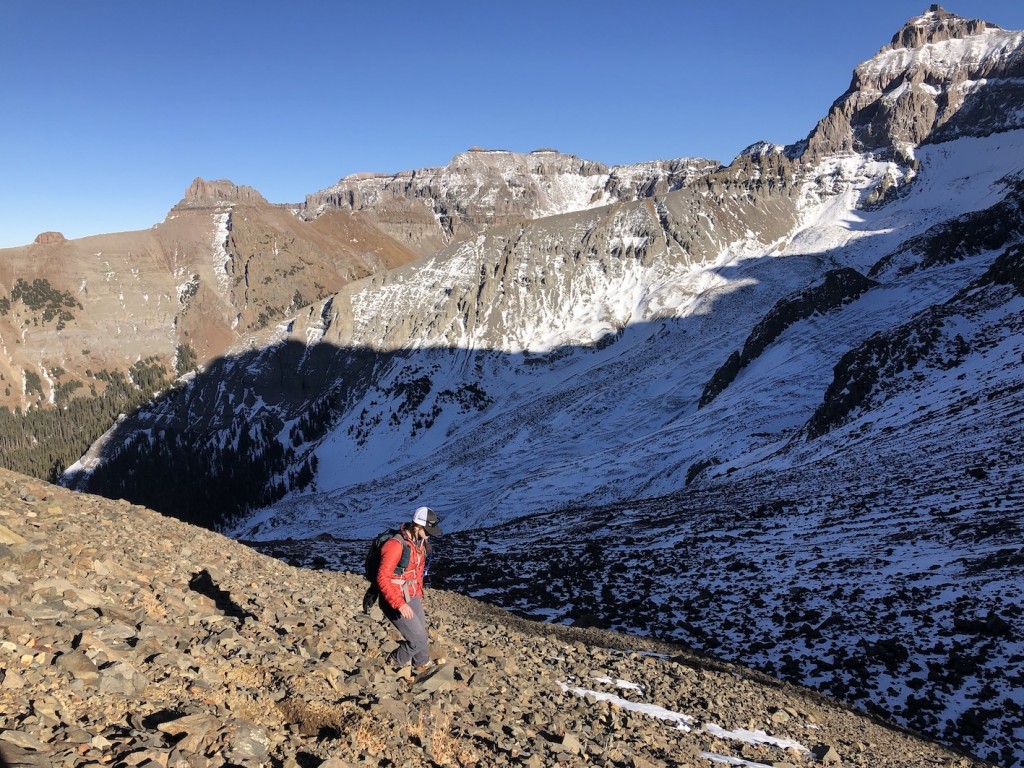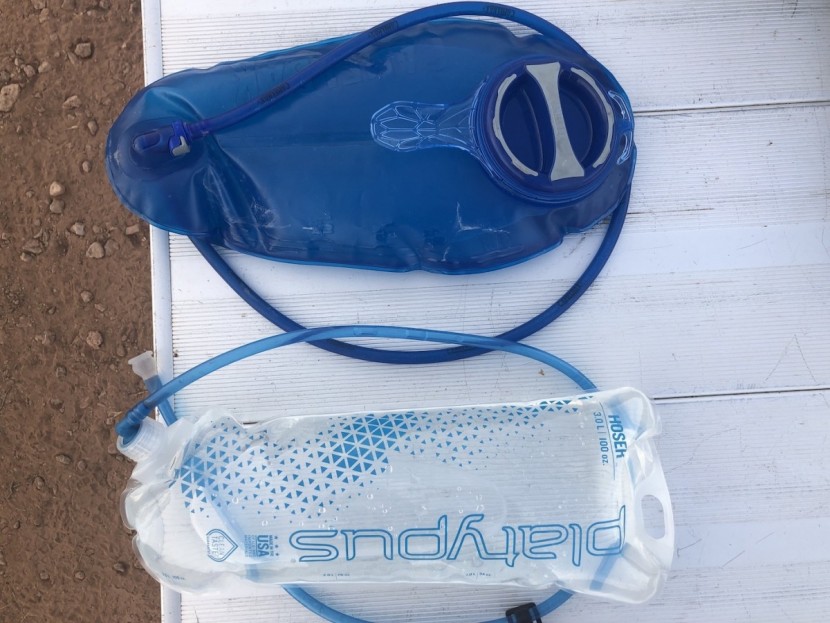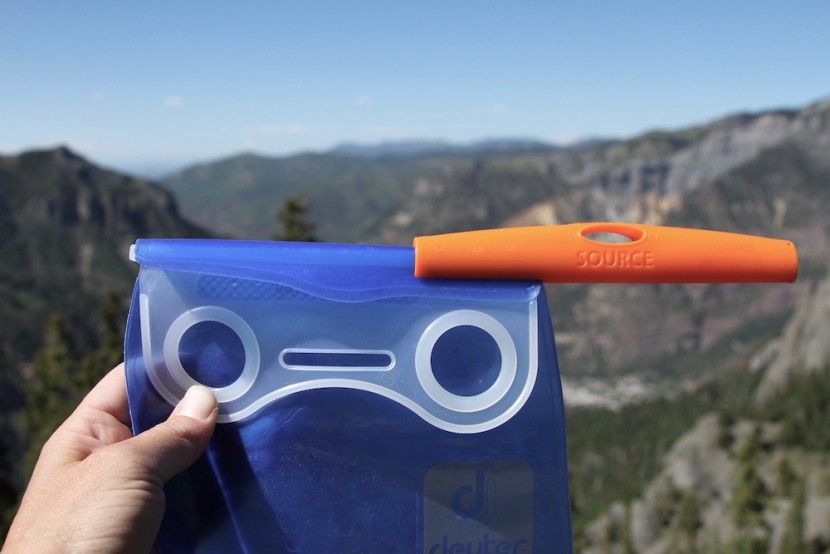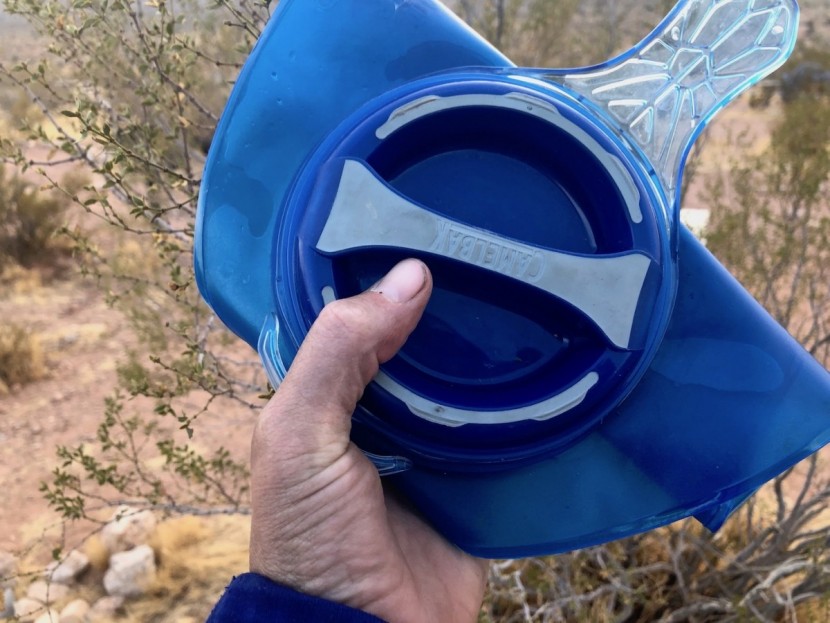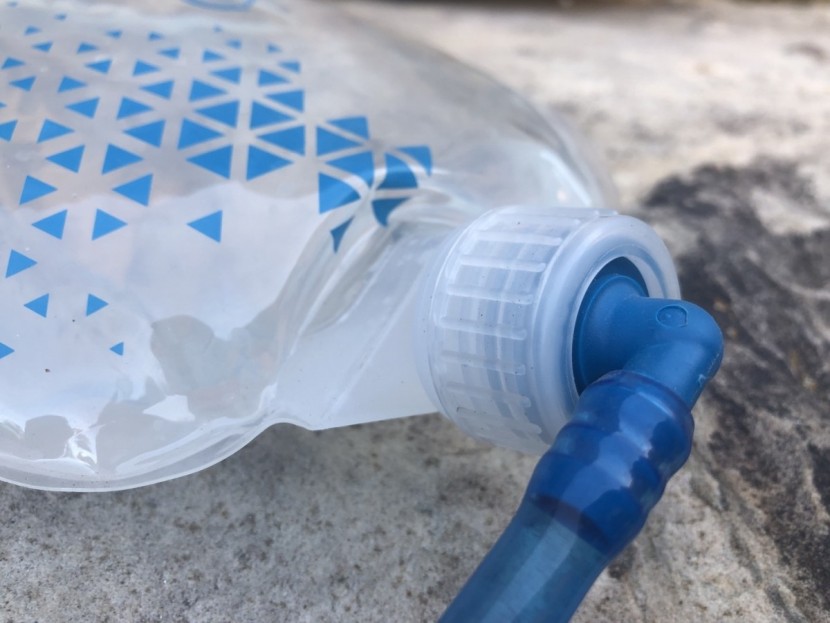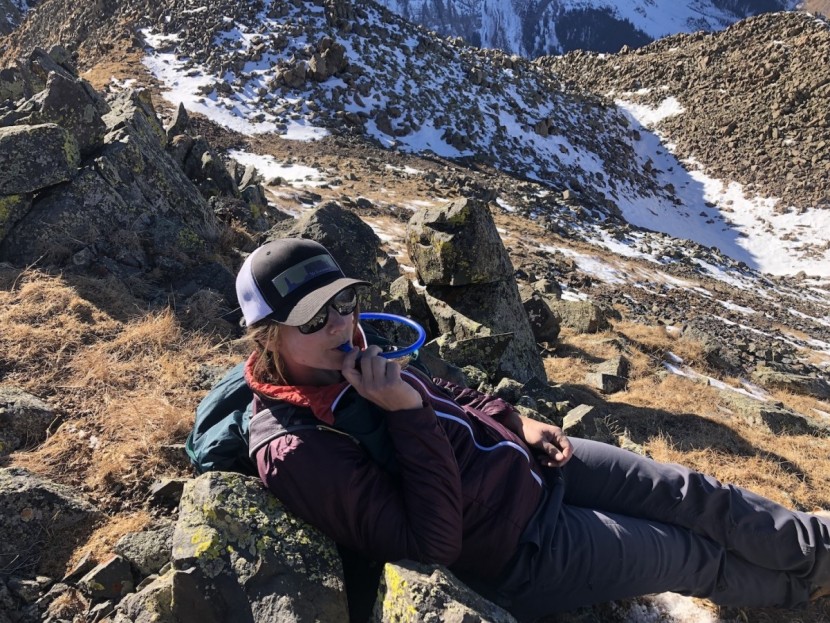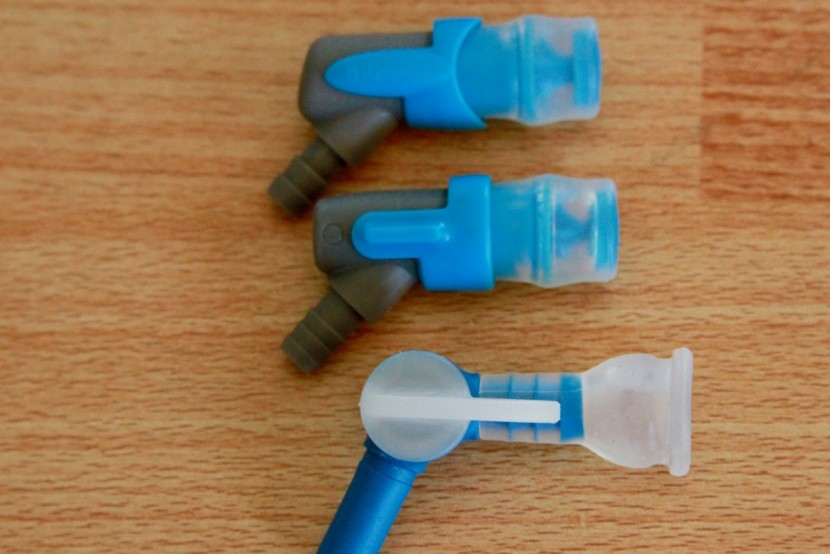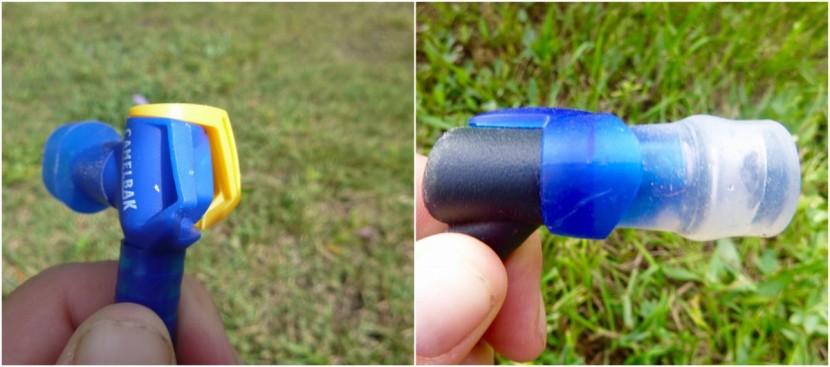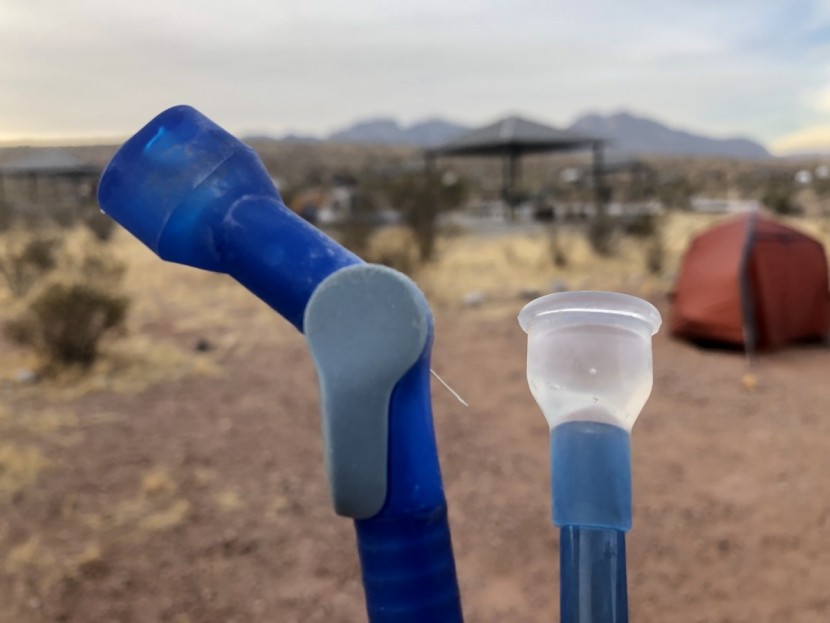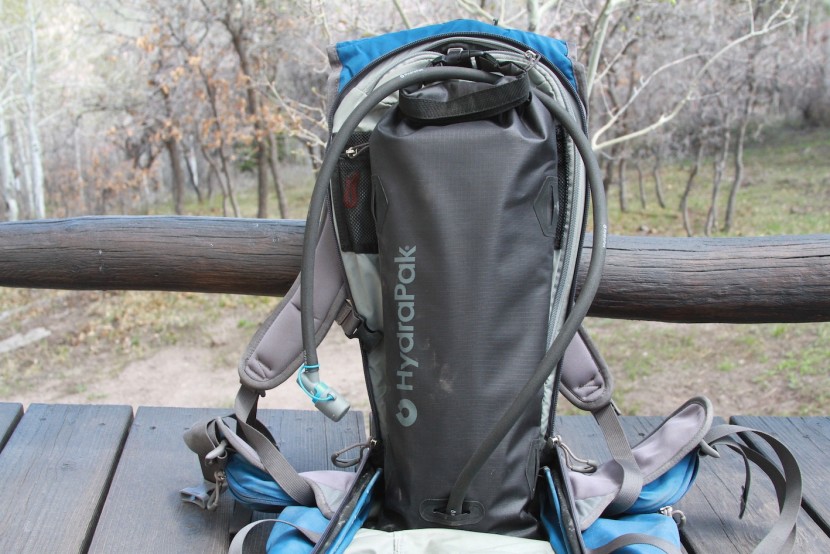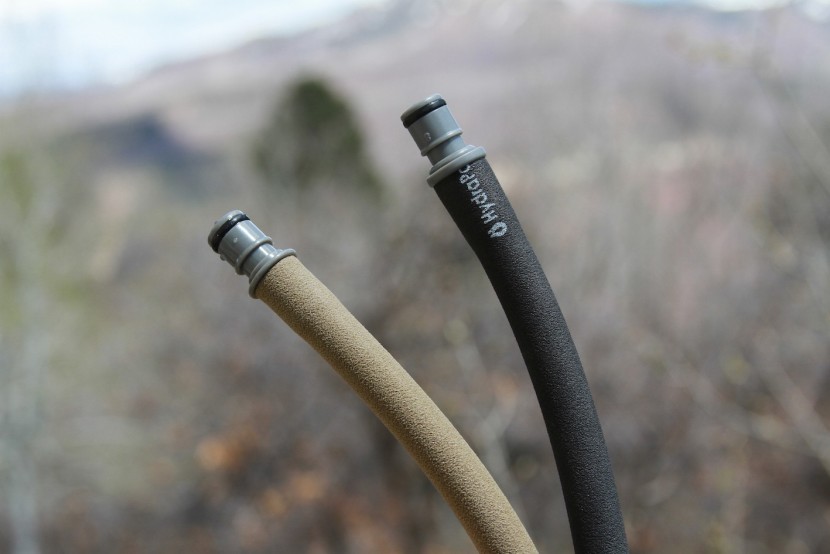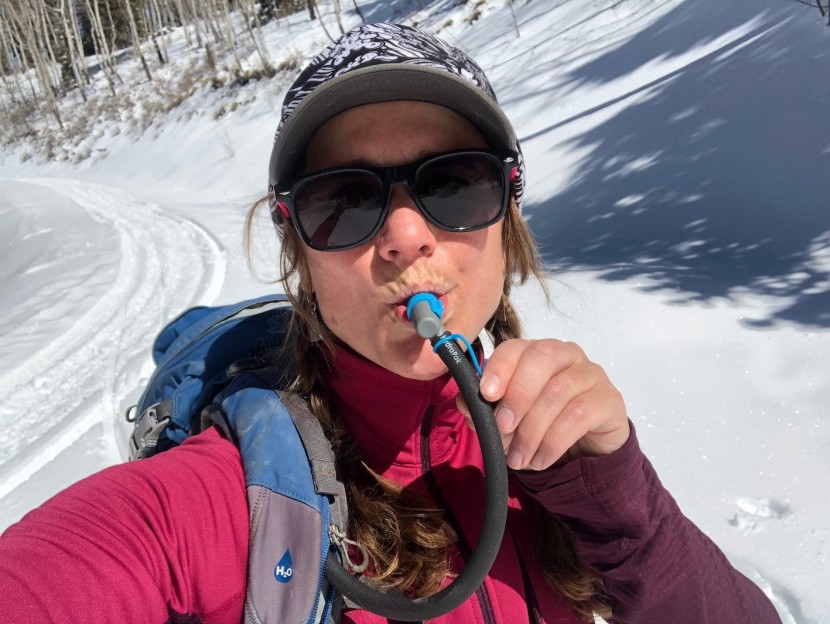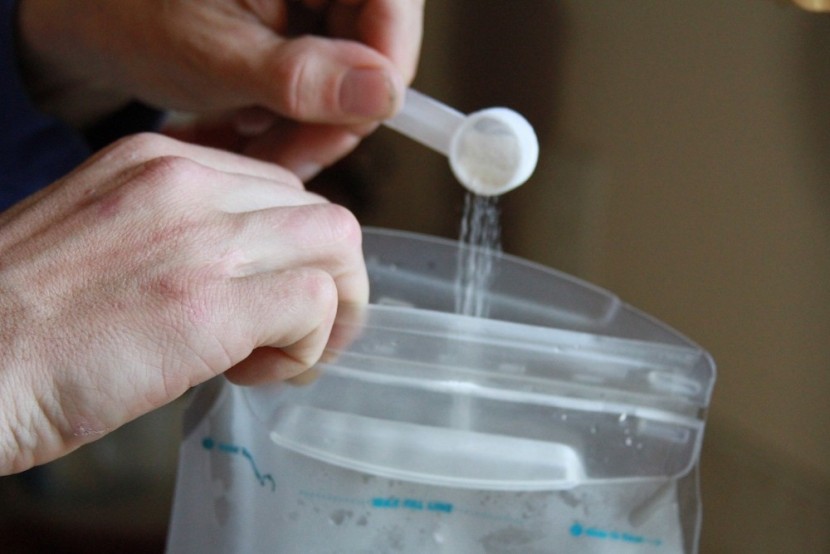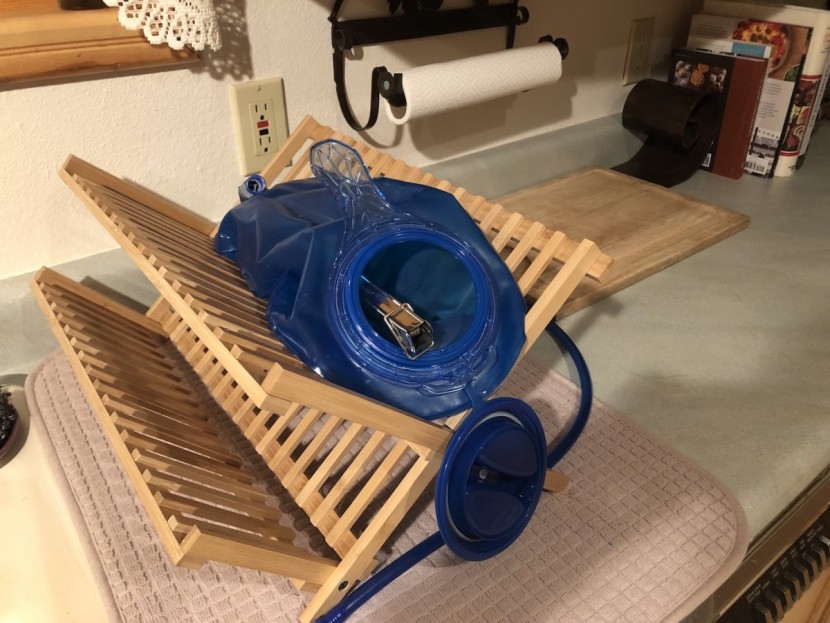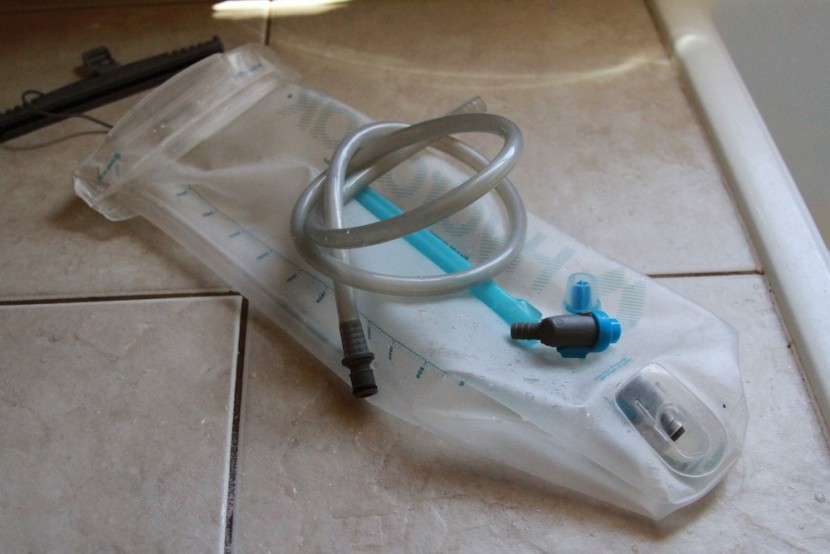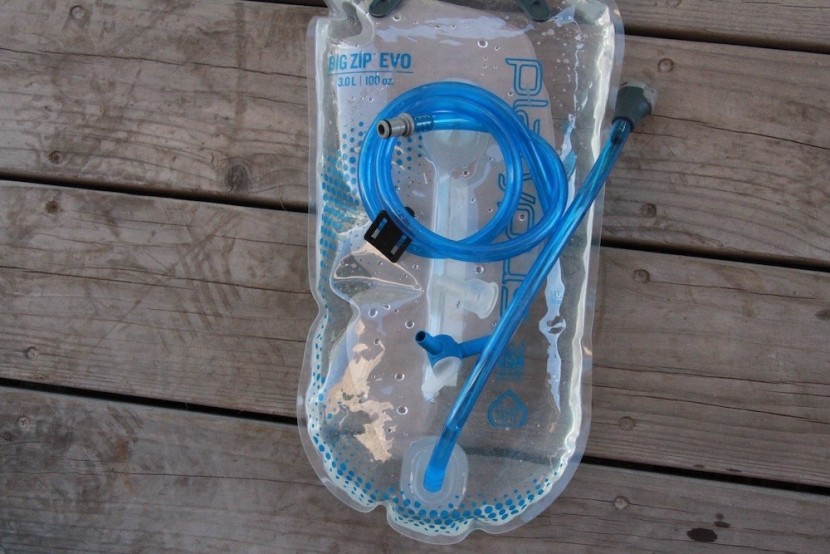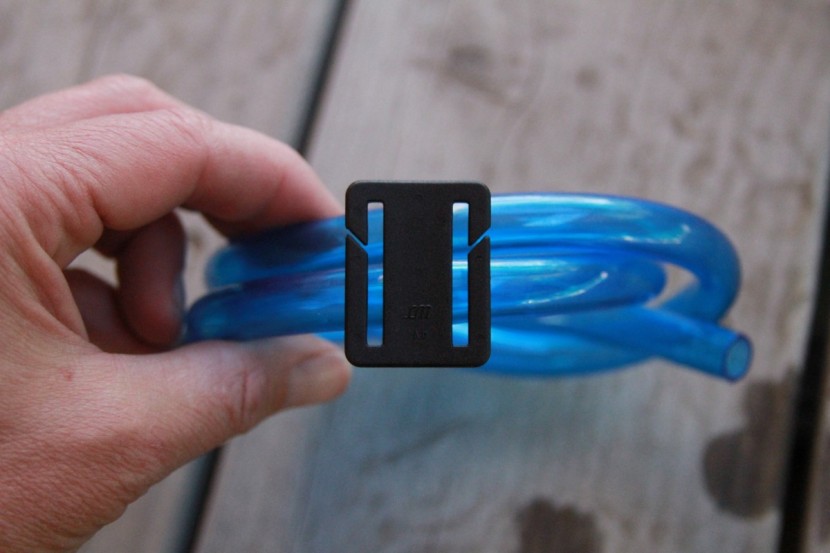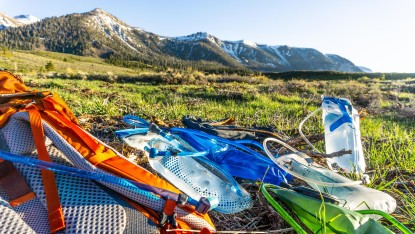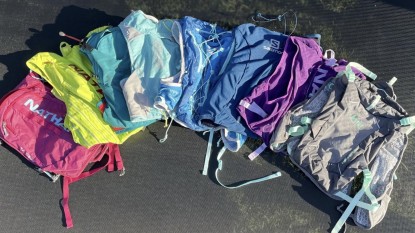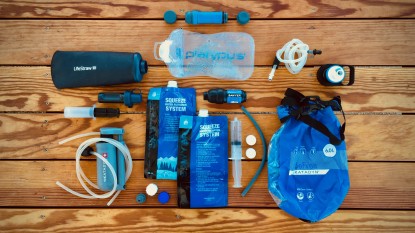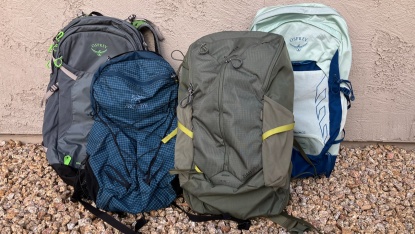Hydration bladders first showed up during the '90s in the cycling world where athletes wanted hands-free access to water. Initially, they were just sold in hydration packs but it didn't take long for all backpack manufacturers to realize this was a very convenient way to drink while hiking, backpacking, running, and many other sports. Most recreational backpacks sold today are compatible in some way, either as a sleeve to hold the bladder, a hole for the drink tube, or ways to thread the drink tube through the shoulder straps. Those that might consider a bladder are those that prefer hands-free hydration and don't mind the weight of it on their backs.
Budget
First, set a budget. How much are you willing to spend? When looking at the different options, be sure to hone in on durability and longevity. A high-value product should keep you hydrated for years, with just a small investment. In-depth reviews are your best window for insight here.
Size and Compatibility
The next thing to consider is the relative fit and profile with your backpack. Look at your hydration pack, and focus on the profile and length of the sleeve. Is it wide or narrow? Most hydration bladders use a similar shape, but they all vary a little bit. More important is the size. Almost all bladders come in two-liter and three-liter sizes, and some come in even smaller sizes (1 liter = 33.8 ounces, a little more than a quart).
In general, we recommend 3L hydration bladders. Compared to 1L and 2L bladders they are about the same price and weight but give you 50 percent more water. You can choose to fill your bladder the whole way or just partway. One reason not to get a 3L bladder is if the compartment in your pack is small. For example, in trail running sports, a running pack like the Salomon ADV Skin 12 Set will typically only hold a 2L hydration bladder. That said, you can still use a 3L hydration bladder, we just can't fill it up the whole way. If you're looking for something versatile, go larger, but if you want a bladder for a specific purpose, find out what size your pack will best accommodate, and get that. Take a look below at our sizing guide to help guide you in making a size decision.
Sizing Guide
Even though we recommend a larger bladder, it may not be in your best interest. Take a gander below to see which size is best for you. All bladders we tested had large and small reservoir options.
1 Liter (or 1.5L): A great size for minimalists, commuters, or kids. It's perfect for quick hikes and trail runs, or if you intend on filling up often on the trail.
2 Liter: Probably the most popular option. This is best for those taking off for a day hike, ski, or snowboard into the backcountry. If you're not a fan of constantly filling up, this is a great option. It provides a sufficient amount of water for most of the day (depending on how thirsty you are!)
3 Liter: The most versatile of all sizes. This is perfect for those who don't plan on filling up or are in need of a lot of water. We like this size the most because you have the option to carry a lot or a little water. Many of our backpackers find this to be a sufficient size when going through areas with little to no fill-up opportunities throughout the day.
In general, we recommend 17-25 oz of water per hour for hydration during endurance activities. The range is dependent on the air temperature, your exertion level, and your body. Here is a great article on hydration and exercise to help you find the right size of hydration bladder that fits your needs.
Bladder Profile
Another compatibility consideration is the profile of your bladder. Some bladders are wide while others are narrow. Some (when filled) are fat while others are flat. So what do you need? Before you purchase a reservoir, take a look at your hydration pack. Most that are hydration bladder compatible come with a built-in sleeve. Take a look at the sleeve to see how wide or narrow it is. From there, you can determine if it best fits a bladder with either a narrow or wide profile.
Hydration Bladder Opening: Zip Top, Fold Top, or Screw Cap?
When considering what kind of bladder opening to go with, you need to consider how easy it is to fill, the environment you are filling in, and how easy it is to open and close. There are three styles of bladder openings: fold top, zip-top, and screw top. There is also a less common bottle-top bottom that we will outline as well.
Fold Top bladders are the most popular in this review. The tops flip up and fold over; once folded over, you slide a closure over the top, and the bag is free from leaks! This design is the best type of bladder opening when filling up in streams or other outdoor environments where you need to gather water from limited, trickling sources. They are also great to use under a regular tap at home.
Zip Top bladders are similar to the fold top style. They resemble a large ziplock bag with a closure that fits overtop the zipper. Even though these are easy to use, many of our testers thought they took a little longer to open and close then fold top styles. These are also great options for filling up at slowly flowing streams and at home under a regular tap. Even though they are easier to clean than screw top options, they are harder to clean than fold tops as you need a brush and cannot flip them inside out.
Screw Top bladders take a little longer to open and close than other versions but are the easiest to fill in shallow basins. The screw models are held horizontally or diagonally when filling. This is especially handy at public restrooms and camping restrooms where you don't want the bladder touching more surfaces than needed. That said, cleaning can be awkward and hard to reach with manual brushes. However, a cleaning tablet works well with these.
Bottle-Top Style bladders are not very common, but you'll find them in some products. It's a nice option if you prefer a smaller opening. These are a little harder to clean and can easily be filled with just one hand.
Rate of Flow
The rate of flow is determined by both the bite valve and the diameter of the hose. The location of the hose also changes the rate of flow. Take a look below to learn about these.
Bite Valves
Bite valves vary in size and type and with different locking mechanisms. The size of the valve and its construction in part determines how easy water flows through the tube. Bite valves that are larger are harder to suck water through the tubes (except if you have a pressurized system). Small valves are sufficient but don't offer the larger water flow that medium valves provide.
For locking mechanisms, there are three types. These include the turn valve, switch, and push or pull. Of the three, the switches are most natural to use while exercising while the turn and push or pull valve require a little more effort. That said, valves tend not to leak, even when left unlocked.
Hose Diameter
A hose that holds more water offers more pressure and thus more flow. If a high flow rate is important to you, look for a bladder with a wider diameter hose. On the flip side, these hoses are typically burlier and not as lightweight as those that are thinner.
Is an Insulated Hydration System Worth It?
There are many different types of bladders on the market, and some come with insulation. Some are fully insulated by providing a sleeve that the bladder slides into while others might just have a tube that's insulated.
The advantage of these systems is the fully insulated sleeves will keep your water cooler longer in hot weather. So if you love super cold water in hot weather, these insulation sleeves will definitely provide you that service. We tested and verified this performance in both field and objective, in-lab tests.
However, insulated tubes are a different story. The insulated tubes we've tested offer a thin layer of insulation around the tube. Unfortunately, while many manufacturers will advertise an advantage that prevents water from freezing, these systems typically are still not a fail-safe from water crusting up and icing in the tubes. While it does prolong the liquid state of it (this we did verify), all the tubes eventually froze up. So, if you're seeking a way to prevent this in the winter, we'd still recommend an insulated tube (especially if you're in super cold climates), but we'd also recommend buying a backpack where you can slide the exposed part of your tube into to provide additional insulation on the tube.
Sugary Substances in your Bladder
While many outdoor athletes will add an electrolyte powder such as Tailwind to ensure appropriate hydration, especially for long-distance endeavors, this can pose a problem for hydration bladder maintenance. Bacteria feed off sugary substances and the population will proliferate faster when it's present.
A hydration bladder has many tubes and connections that can catch this sugar. If it's not cleaned out properly, with time, you can be guaranteed that a colony of bacteria will grow. They especially like the porous plastic environment that still holds sugar, even after a good scrub. While you can put sugary substances into the bladder reservoir, we'd recommend trying to avoid it, simply because it is super hard to clean. With that in mind, one of the best tips we've heard is to simply put your bladder in the freezer (after rinsing it out) so that bacteria won't grow. While you do have to dethaw it to use it, it's a good solution for those who will always put sugary substances into their bladder. On that note…
Tips for Care
Caring for your bladder is of utmost importance to ensure that you don't have to deal with a gnarly bacterial colony. The easiest method is daily care. Empty it out after use, blow the water out of the tube, and let it dry. Below we discuss a few tips to help you care properly for your bladder.
The Bladder
There are many videos online showing how to clean and maintain each reservoir. It should be cleaned with warm water and mild soap. If a bladder is dishwasher safe, make sure to clean it inside out on the top-shelf (to prevent melting) at low temperatures.
Turn it inside out: If your bladder can be flipped inside out, do this and gently scrub (using a non-abrasive pad) with warm water and mild soap.
Use a brush: Use a simple cleaning brush to scrub the inside of the bladder (especially if it can't be turned inside out). This works great for bladders that have a mouth opening only large enough for a brush.
Use a cleaning tablet: There are many hydration pack cleaning tablets that you can use. Fill the bladder with warm water, drop the tablet in, and let it sit. Shake it a few times, discard, and rinse. Some tablets require a little more time than others, so make sure to read the directions carefully. If you don't want to buy a cleaning tablet, use Polident (the same stuff used to clean dentures) found at your local drug store. You can also buy tablets called Hydrapak Bottle Bright; these are biodegradable and chlorine-free.
The Hose
The simplest way to maintain the hose is to ensure no water stays in the hose after use. Just blow the water back through and dry. However, we doubt this is adequate to get all the bacteria out when using sugary drinks. That said, you can buy hose cleaning kits that feature a plethora of brushes. Most brands feature cleaning kits that are compatible across the board. Ensure the brushes are long enough to reach through at least 60% of the tube. You will have to clean it from both ends to get the entire length. The CamelBak Cleaning Kit is only $20 and seems to be compatible with most designs, though we haven't formally tested it.
The Mouthpiece
Of all parts, the mouthpiece tends to be the most forgotten about during the cleaning process. Each mouthpiece is different, but there are many online videos showing how to take your mouthpiece apart. In doing so, take off the tubing (if possible) and deconstruct the mouthpiece. Use a small cleaning brush to remove any nasty residue that you might find in cracks and crevices. Dry while deconstructed, then put it back together. If you are unsure how to deconstruct the mouthpiece, check the company website and look under the 'cleaning and care' section.
The O-ring
All the bladders tested (except the MSR) have an O-ring in the quick release port that ensures there is no leakage and helps to maintain a tight seal. It's important to lubricate the O-ring to make certain that the quick release system continues to perform. In the past, our main tester had a quick release port fail because she failed to keep it lubed. Use a food-grade silicone lubricant on the end of the hose to be sure this stays primed. We recommend doing this for all products - not just the HydraPak brand.
Cleaning on the trail: Use warm water and a mild (biodegradable) soap. Fill the reservoir, shake, leave it in the sun (this kills bacteria with UV light), rinse, and dry. If you have baking soda on hand, use this with water for a great clean.
Tips for Use
Even though bladders seem pretty easy to use, we have a few tips from our testers to optimize the use you get out of a bladder. We give you the low-down on tube clips, hot and cold drinks in your bladder, and burping your bladder (like a baby).
Tube Clips
One of the most annoying parts of a hydration bladder can be the tube. This hangs over the shoulder and without a means to secure it means it will bounce around. Tube clips are used to remedy this problem. They come in two forms; the pinch and magnetic clip. The pinch clip slides over the tube and clips onto a shoulder or chest strap. The magnetic clip is similar except you choose a place to put the first magnet. We like to use the chest strap. The other magnet sits on the tube; the magnets are strong and hold the tube in place. Of the two, we like the more convenient magnetic option. However, one issue we encountered was it would sometimes fall off because the orientation of the magnetic piece wasn't perfect. Tube clips are universal and should fit all models.
Hot and Cold Drinks
Most bladders are constructed with a plastic-based material that can be temperature sensitive. You shouldn't put hot liquids in your bladder unless the manufacturer says it's okay. The HydraPak brand bladders (Osprey, HydraPak, and Geigrigg) claim to be safe while frozen and up to temperatures of 140*F (warm not hot). Other bladders don't make claims about how they perform in hot or cold temperatures. As a rule of thumb, though, avoid extreme temperatures in any plastic-based hydration system. These temperatures can leach plastics into your water, which, in the long run, is not beneficial for your long-term health.
Burp Your Bladder
Are you tired of water sloshing on your back while you explore the great outdoors? Most folks new to the hydration bladder don't know this trick that can be incredibly helpful on the trail. What is burping your bladder you ask? It's just removing the excessive amounts of air to (a) ensure it fits well in a pack and (b) to prevent sloshing. Follow the steps to burp!
Step 1: Fill your bladder with water.Step 2: Seal your bladder with its lid closure.
Step 3: Turn it upside down, so the excess air is at the bottom of the bag (or where the tube connects to the reservoir).
Step 4: Suck all the excess air through the tube until water starts to flow through the tube.
Step 5: Enjoy a less sloshy experience.
Conclusion
Your next hydration bladder should keep you hydrated, happy, and healthy while you explore the backcountry. Be sure to consider what you need from this simple piece of gear. Once you know what you're looking for, take a gander at our top recommendations as we've put each bladder to the test in a variety of conditions, side-by-side. Hopefully, this will help you determine what you should buy for all the big adventures you have planned for the future.

